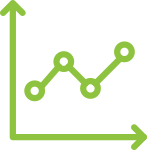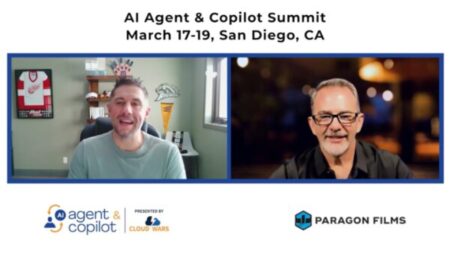
The context and purpose behind this series: “The 17 Companies Reshaping the Landscape of Enterprise AI“.
Who They Are
Cloud tools that only offer a small handful of solutions or capabilities are doomed to fail. Customers are looking for feature-rich tools that are easy to use, scalable, and secure across omnichannel experiences. Further, customers demand these experiences are available where they are in a seamless fashion.
To that end, Google Cloud’s mission to “accelerate your transformation” serves as the backbone for its artificial intelligence goals. Additionally, they look to “spread useful AI effectively around the world.”

We are very proud of what we came up with in this platform [Vertex AI], as it enables serious deployments for a new generation of AI that will empower data scientists and engineers to do fulfilling and creative work.
Andrew Moore, VP & GM of Cloud AI & Industry Solutions at Google Cloud in reference to the launch of Vertex AI.
Announced in 2017, Google AI set out with the goal of “advancing AI for everyone”. Further, Google AI’s core approach is:
“We fundamentally believe in the promise of AI, we also think that it’s critical that this technology is used to help people — that it is socially beneficial, fair, accountable, and works for everyone.”
What They Do

The wealth of solutions that Google can package into the Google Cloud and Google AI capabilities is amazing. However, each component should be evaluated for your unique needs as it can become quickly overwhelming.
But this brings up an important question that begs to be asked:
How does Google AI expect to deliver artificial intelligence to everyone?
What Google Cloud did was simplify the delivery by targeting 4 areas that drive every aspect of what they do to advance AI.
Building responsible AI for everyone
Learn from ML experts at Google
Tools for everyone
Advancing the state of the art
Additionally, Google realized the need to address the multitude of use cases for AI. And, again, they rose to the challenge to simplify the complex by breaking down the use cases into 4 ways, but with core products underneath each one.
- Build with AI
- Conversational AI
- AI for Documents
- AI for Industries
The role of AI across the globe has driven large tech firms such as Google to implement AI principals. These principals form an ethical charter to guide development and usage of AI.
Responsible AI Practices
These questions are far from solved, and in fact are active areas of research and development. Google is committed to making progress in the responsible development of AI and to sharing knowledge, research, tools, datasets, and other resources with the larger community. Below we share some of our current work and recommended practices. As with all of our research, we will take our latest findings into account, work to incorporate them as appropriate, and adapt as we learn more over time.
Review Process & Operations
At Google, a central team is dedicated to ethical reviews of new AI and advanced technologies before launch, working with internal domain experts in machine-learning fairness, security, privacy, human rights, the social sciences, and, for cultural context, Google’s employee resource groups.
Most Unique / Impactful Application
The new kid on the block, which brings a powerful punch with feature-rich capabilities, is Vertex AI. This unified ML platform gives developers an easy-to-create and deploy model. But, what’s under the hood?
The benefits of utilizing Vertex AI can be summed up three ways:
Train models without code, minimal expertise required
Take advantage of AutoML to build models in less time. Use Vertex AI with state-of-the-art, pre-trained APIs for computer vision, language, structured data, and conversation.
Build advanced ML models with custom tooling
Vertex AI’s custom model tooling supports advanced ML coding, with nearly 80% fewer lines of code required to train a model with custom libraries than competitive platforms (learn more: watch Codelab).
Manage your models with confidence
Vertex AI’s MLOps tools remove the complexity of model maintenance, such as Vertex AI Pipelines, to streamline running ML pipelines, and Vertex AI Feature Store to serve, and use AI technologies as ML features.
Who Have They Impacted

Sustainability is not only a hot topic now, but vitally important one – for humans and the planet. The way we steward our resources, educate new generations, and leverage technology all speak to the success or failure of any sustainability efforts.
For Semios, they realized the critical nature of resource stewardship and created its “Precision Agriculture-as-a-Service” solution. With an injection of $100 million in capital, the capabilities open up new frontiers for managing resources and understanding disruptive patterns.
- Integrated Pest Management
- Uses a logical approach to mating disruption that really works. By measuring in-canopy climate, customized mating disruption programs targeted for unique pest behavior.
- Weather Monitoring
- Whatever the season, knowing the climate conditions faced by crops will help take the right preventative and corrective measures for the best results.
- Warer Management
- Make the most out of limited resources while keeping plants in the best condition for optimal results.
- Scouting Tool
- Save time scouting and stay on top of crop risk, while easily sharing observations with teams.
- Reporting
- Reduce reporting-related friction on farms with automatic record-keeping that’s always updated and secure.
Infused into Semios platform is Google Cloud, Google AI, BigQuery, and Google Earth Engine to manage massive volumes of data collected from thousands of IoT sensors – and the numbers are astounding.

600,000 total pests counted

520,000,000 daily sensor data points

2,000,000 sensors installed

“Agricultural insights tend to exist in siloed databases. BigQuery allows us to connect disparate data sources where no connections previously existed. We were the first company to bring it all together, to give our customers the big picture of their crops.”
Tess Trethewey / Director of Operations at Semios
Closing Thoughts
Google Cloud is making headway in the AI space and should not be taken for granted. In fact, Google Cloud views artificial intelligence as “The Next Accelerator to Bring Efficiency and Resilience“. And under the leadership of CEO Thomas Kurian, Google Cloud experience huge growth due, in large part, to Google AI.
However, the cautionary tale here is to always ensure the human is in the loop. The acceleration of innovation should never discount people as the nucleus of all technology – because people plus technology is necessary for the future.








